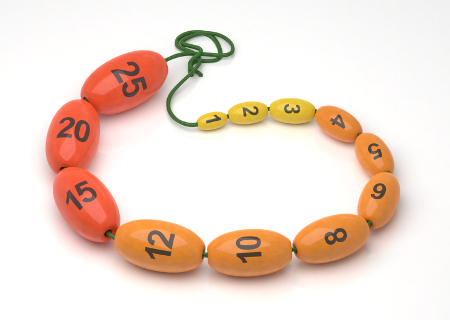History and exam
Key diagnostic factors
common
infertility
The most common presenting symptom, affecting >99% of men with KS.[4]
More than 90% of men with KS are azoospermic.[2]
The great majority of diagnoses of KS are made in men who are undergoing evaluation for infertility.[3][4]
The European Academy of Andrology recommends karyotype analysis for KS in any man with nonobstructive azoospermia or severe oligozoospermia (total sperm count <10 million/ejaculate or sperm concentration <5 x 10⁶/mL).[3]
The prevalence of KS is 3% to 4% among all infertile men, 6% among those with a total sperm count <10 million/ejaculate, and 10% to 15% in those with nonobstructive azoospermia.[3]
failure to complete pubertal maturation
small testes
The only clinical examination feature reliably seen in individuals with KS is small testes from mid-puberty onward. The testes may be firm or soft.[2][4][14][18] Testicular volume can be measured using the Prader orchidometer.
The testes are typically normal in size or only slightly small in prepubertal childhood.
They begin to enlarge normally at the onset of puberty, typically around 11-12 years of age. However, they rarely progress beyond a bi-testicular volume of 10 mL and this is then followed by involution, with the testes shrinking to around 3-5 mL (the size of an almond kernel) in older adolescents due to the onset of hypogonadism.[2][4]
Bi-testicular volume is <6 mL in >95% of adult men with KS.[1][26]
Rarely, in severe phenotypes, a boy may be born with reduced testicular volume due to intrauterine hypogonadism.[3] [Figure caption and citation for the preceding image starts]: Prader orchidometerCreated by BMJ Knowledge Centre [Citation ends].
expressive speech delay in early childhood
Delayed speech development has been reported in 40% of children with KS.[1][4] Expressive verbal ability is most often affected; toddlers may be slow to start speaking but their receptive comprehension is usually normal.[2][21]
Among adolescents with KS, deficits in expressive language skills are more common than in peers without KS.[3]
uncommon
micropenis
Rarely, in severe phenotypes, a boy may be born with micropenis (stretched length ≥2.5 standard deviations [SD] below the mean for age) due to intrauterine hypogonadism.[3] KS is part of the differential diagnosis if examination of a newborn boy identifies this sign.[2][3]
Decreased penile size is seen in 10% to 25% of boys with KS but it is very rare for them to fulfill the criteria for micropenis.[3]
cryptorchidism
In rare cases, newborn boys with KS may have cryptorchidism although this is very rare.[3] KS is part of the differential diagnosis if examination of a newborn boy identifies this sign.[2][3]
For more information, see Cryptorchidism.
Other diagnostic factors
common
developmental delay
Learning and developmental delays are most commonly noted between 1-5 years of age but are nonspecific and do not necessarily point to the diagnosis.[13][17][20]
Some degree of learning disability has been reported in >75% of boys with KS.[1][4]
Some boys with KS have problems with attention and executive cognitive function, which can lead to expressions of frustration.[2][3]
Boys with KS will often be receiving special educational support.[1][2][3]
In rare cases, a boy with KS may be very slow to start walking and KS will be identified on chromosomal testing.[22]
behavioral problems in childhood
Common in boys with KS.
Infants are sometimes reported as being easy to manage and not as demanding as their siblings.[2]
Boys with KS may be quiet and passive, but impulsivity may be present and difficulties with self-expression and executive tasks may lead to temper tantrums and anger outbursts.[2][23]
One population-based study found an increased risk of attention deficit hyperactivity disorder (ADHD) and autism spectrum disorders among individuals with KS.[24]
tall stature
Affects around 30% of KS individuals and is believed to be due to the presence of three copies of the SHOX gene.[1][2][4][23]
Infant length is typically within age-related norms.
The rate of height increase tends to accelerate throughout childhood so that by school age, boys with KS may be on a higher centile than predicted (based on mid-parental height and/or compared with siblings).[2]
Look for an upward shift in height centiles during childhood.
Tall individuals with KS have disproportionately longer legs.[3][4]
However, extreme tall stature is unusual.[2]
lack of facial and pubic hair
gynecomastia
sexual dysfunction/reduced libido
high fat-to-muscle ratio/abdominal obesity
Weight gain can begin in childhood or adolescence and often persists into adulthood.
Central obesity (“pot belly” and wider hips) is common after the adiposity rebound at 6-7 years.[2]
A high abdominal fat mass, together with decreased muscle mass and strength, are present in around half of adolescents with KS but are very nonspecific signs.[2][4]
Obesity is often seen in adulthood, particularly around the abdomen and hips.[2][3]
social/ psychological issues
fatigue
Fatigue/lethargy is a nonspecific finding that is common in individuals with hypogonadism.
Risk factors
Use of this content is subject to our disclaimer